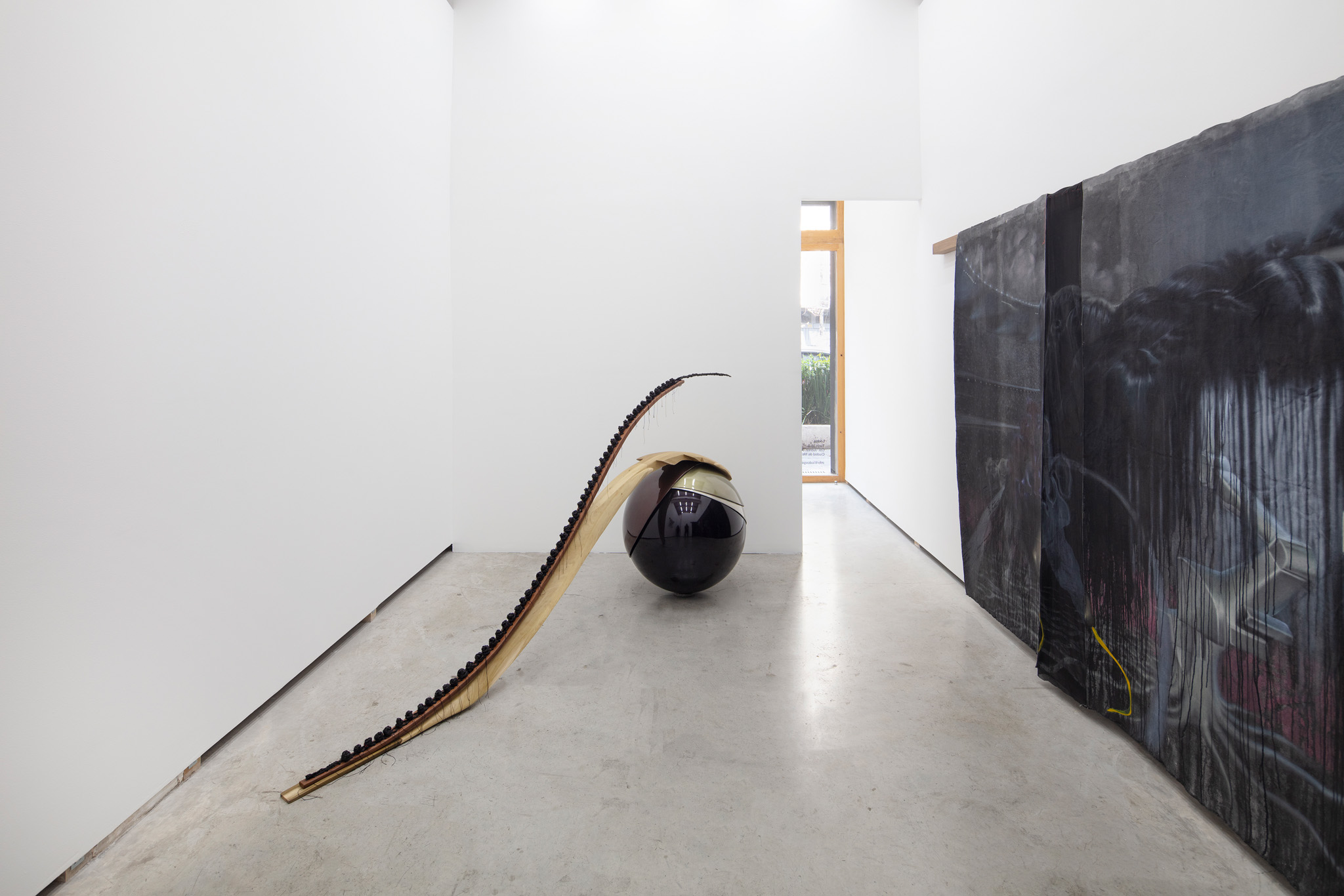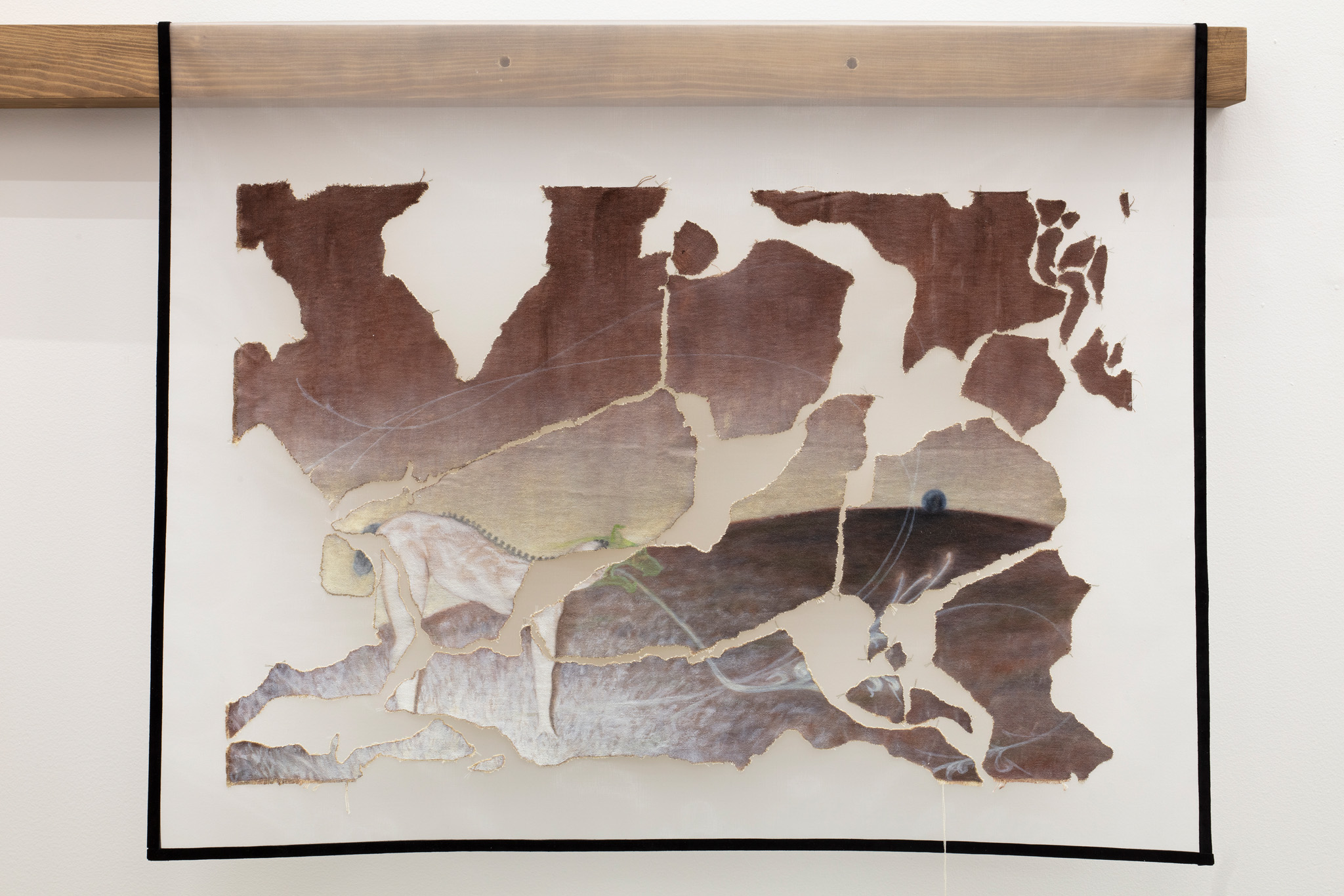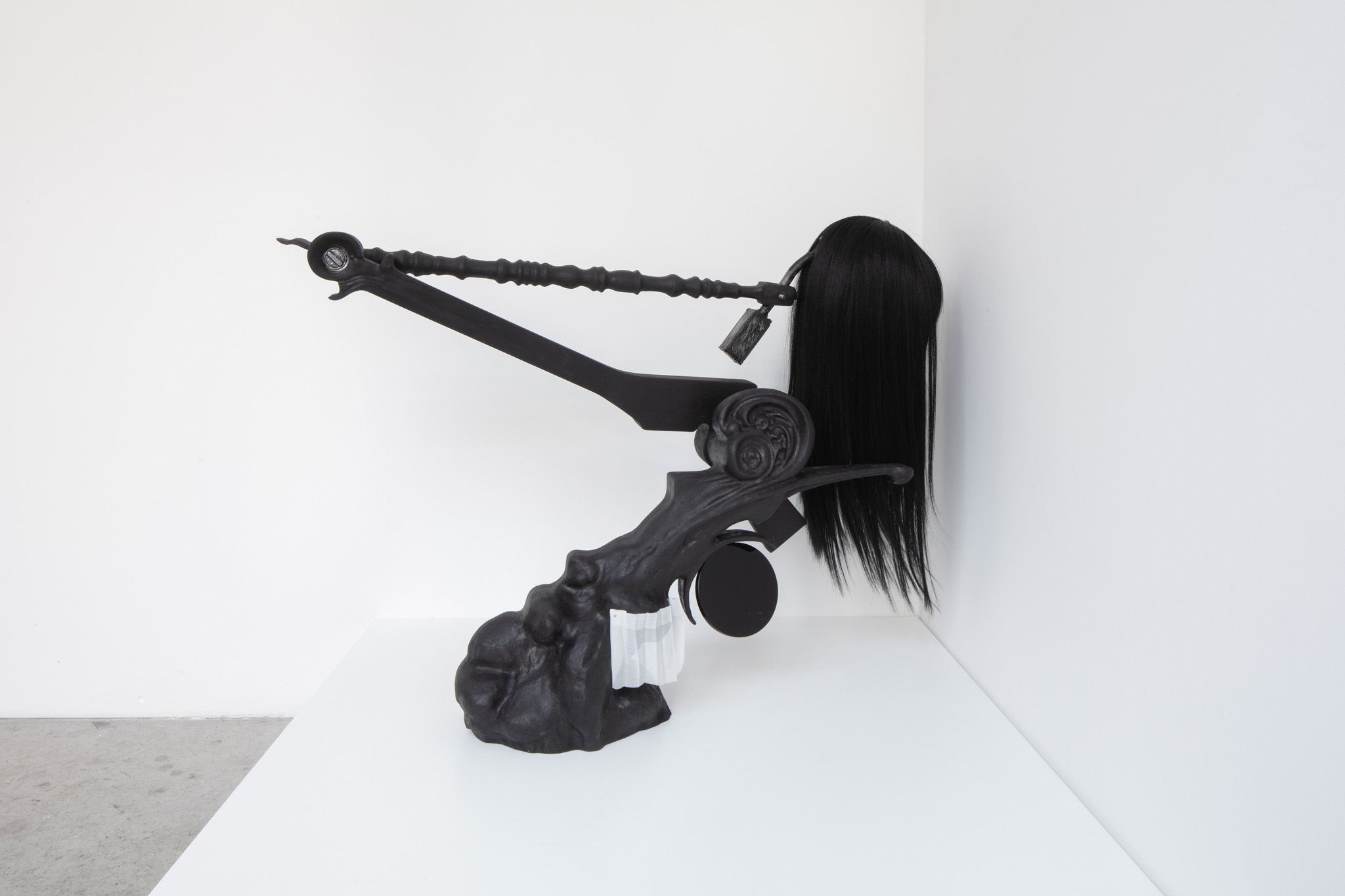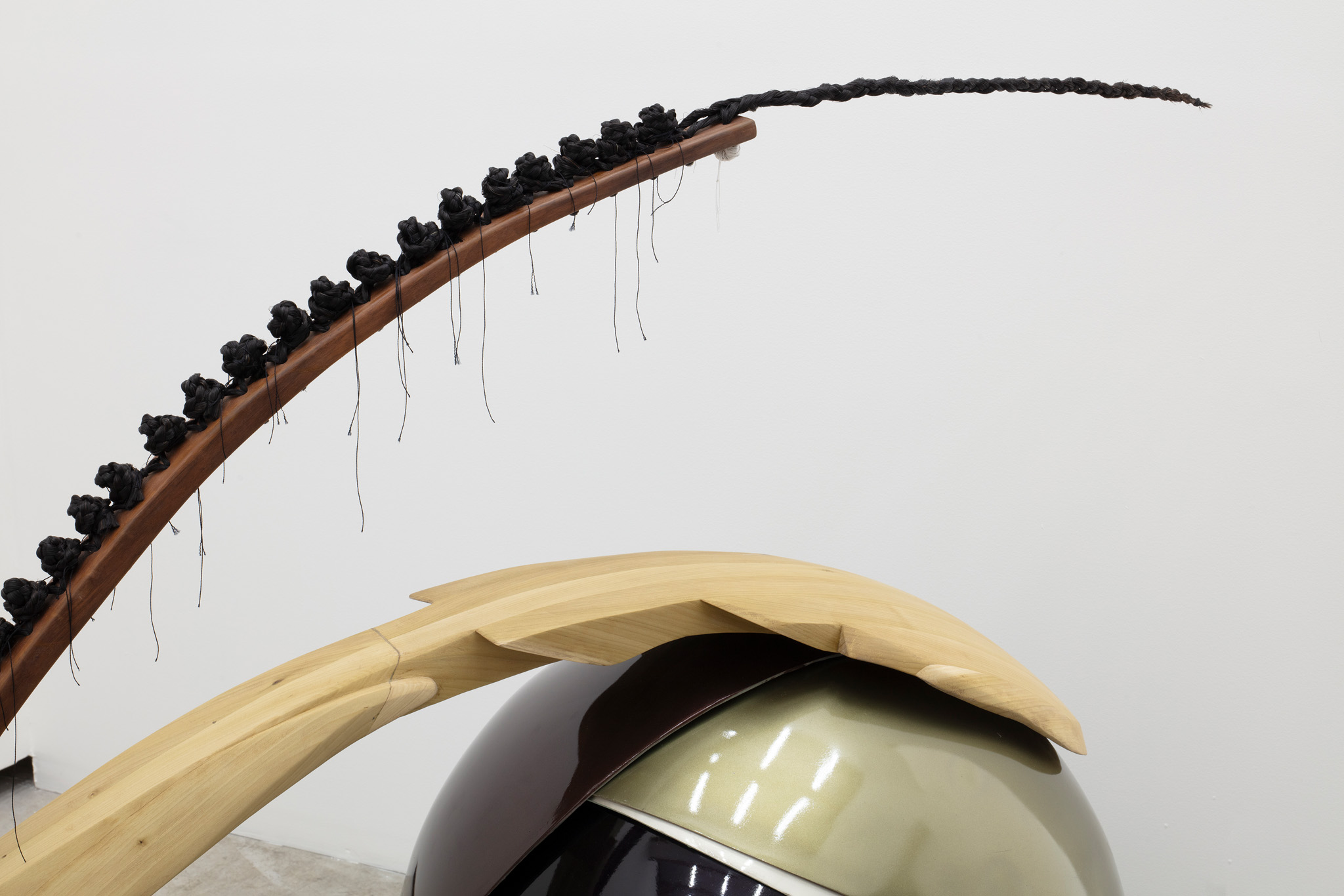
Review
Hiperparéntesis. Samuel Guerrero at Lodos
by Julián Madero Islas
Reading time
4 min
They rode on beasts
Like demons of evil ¹
The hyperparenthesis could be modernity itself, seen as a chain of misunderstandings. The historical narrative transliterates: the gaze and words of the other, the aberrant interpretation, the imposition, censorship, and destruction of identities. Hiperparéntesis speculates on the manifestation of continuity between the cracks of history.

Delving into the porosity of narratives, Samuel Guerrero recalls the descriptions of horses documented by Sahagún's informants: "They carry 'deer' on their backs. They are as tall as rooftops," the iron armor, the “rain of fire” from their cannons, the yellow eyes of their enormous dogs “that spew fire, emitting sparks.”² Transliteration of images, fragmented transaction of visions.
On the other hand, the accomplished fact: the colonization of the spirit. “Sahagún portrays the Indian as possessing a technology of listening and vociferation with strong demonic elements [...] he is interested in rearranging this psychosocial apparatus to install another voice.”³
Guerrero proposes a counter-version of history while conjuring new deities. Hiperparéntesis feels like a series of hyperstitions born from the clash between historical descriptions and the tangible world: uncomfortable, interrupted, and alive objects.

The sculpture Miembro superior (aproximaciones a partes del cuerpo no visibles) [Upper Limb (Approximations to Non-visible Body Parts)] seems animated by a continuity of the sensory, conjured by its materiality—a dark, threatening magical artifact. A character almost drawn graphically, thick black lines executed in three strokes, reconstructed furniture, Gothic catapult, torture device. A robotic leg folded upon itself, granted a head to think with, complementing the play of weights and counterweights balancing its various joints. The head, the lock-bell, the obsidian mirror, and a small white curtain sketch the profile of a demonic figure grinning toward the future.
The central piece of the exhibition, Hiperparéntesis, is a two-meter-tall by five-meter-wide canvas suspended from a wooden beam, curving into the gallery corner. The fabric is interrupted by three vertical stripes of black, red, and brown polyester; the brown, on the far right, exceeds the canvas, folding onto the floor. A three-dimensional fabric. Curtain-wall-tapestry. The historical curtain as a counter-version read from right to left.
The canvas is also a stadium-coliseum, an image that envelops us and incorporates us into its space. We are inside this machine: the stadium, the main square, the bullring. The treatment of the painting, across different fabrics, grants the image a holographic quality: the rendered universe and its duel of titans, Space Jam-style. Among a ghostly chorus of hybrid human-animal-prosthesis spirits, the specter of a horse rises, devouring an eagle. The horse, in its imperial evocation, is in turn devoured by the mouth of the stadium.
At the center of the scene, we see the core, the motor, suspended. To its left, an amputated tree with a mechanical prosthesis crowned by black locks of hair is also the broken tree of Tamoanchan, the loss of the natural state. From this scene of extinction, a prodigy is born: a hybrid, mutant being escaping into the future, leaving a trail of black smoke.

Who is watching the scene? A horse’s eye reflects it, indifferent. It seems strange to refer to T.A. 2025 as a sculpture because its construction integrates a series of “alliances and mixtures” that feel alchemical. The artist refers to it as a "horse-motor," as an “interruption of descriptions.” Its aerodynamic shape becomes a horse’s eye, an amulet, and a weapon of war. It calls to mind Perseus, his winged sandals, and his bronze shield:
and just as the man’s face
masks an animal,
and through the animal’s eyes a goddess lurks,
so we,
who saw Medusa’s face,
saw only the face of our own horror.⁴
These pieces seem to come from the future, bearing old news of war and rebellion. In truth, they reflect the curvature of time. Nostalgia for an uncertain future. Samuel Guerrero summons presences—Tezcatlipoca peers through the cracks of these artifacts, offered to the fire of history.
Translated to English by Luis Sokol
1: La maldición de Malinche, Gabino Palomares.
2: Informantes de Sahagún, Códice Florentino, lib. XII, cap. IV (versión de Ángel Ma. Garibay).
3: Heriberto Yépez, La colonización de la voz: la literatura moderna, Nueva España, el náhuatl, (Tijuana, Internet, Ciudad de México: Axolotl editorxs, 2018), 29.
4: Luis Felipe Fabre, Poeta griego arcaico, (México: Sexto Piso, 2024), 91.
Published on February 20 2025